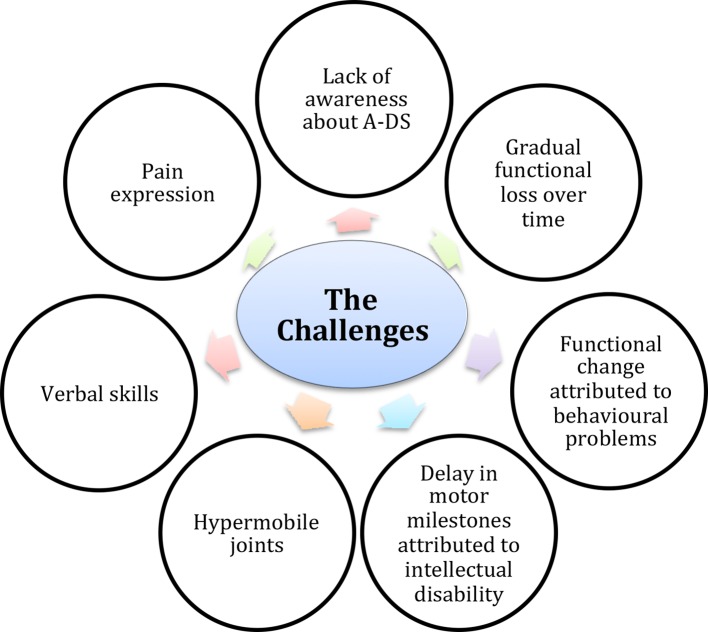Figure 5.
Schematic highlighting challenges which may impede correct and timely diagnosis of A-DS (from top, clockwise). The first is lack of awareness about the increased risk of arthritis in children with DS among both the general public and healthcare professionals; Gradual functional loss over time rather than an acute presentation may go undetected by the child’s carer. Frequently, delay in motor development is falsely attributed to intellectual disability, and changes in activities of daily living to behavioural problems associated with DS, rather than a possible diagnosis of arthritis. Hypermobility, a feature of DS may make musculoskeletal examination more challenging, as it may be difficult to appreciate loss of range of movement secondary to an inflammatory arthritis. Many children may be uncooperative when it comes to examination. This combined with poor verbal skills can make eliciting a clear history and thorough musculoskeletal examination challenging. Apparent differences in pain expression have been reported in children with DS. Children with DS often adapt to pain with reported observations such as slowing mobility, reluctance to hold a parental hand or behavioural change. Therefore, these are key features to try and tease out when taking a history from a child with a suspected diagnosis of A-DS.

